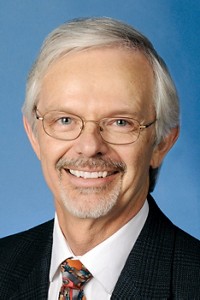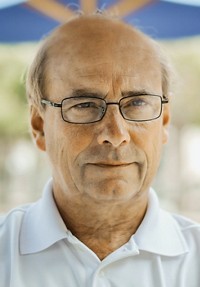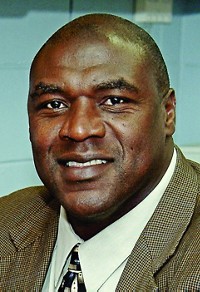Advertisement
Grab your lab coat. Let's get started
Welcome!
Welcome!
Create an account below to get 6 C&EN articles per month, receive newsletters and more - all free.
It seems this is your first time logging in online. Please enter the following information to continue.
As an ACS member you automatically get access to this site. All we need is few more details to create your reading experience.
Not you? Sign in with a different account.
Not you? Sign in with a different account.
ERROR 1
ERROR 1
ERROR 2
ERROR 2
ERROR 2
ERROR 2
ERROR 2
Password and Confirm password must match.
If you have an ACS member number, please enter it here so we can link this account to your membership. (optional)
ERROR 2
ACS values your privacy. By submitting your information, you are gaining access to C&EN and subscribing to our weekly newsletter. We use the information you provide to make your reading experience better, and we will never sell your data to third party members.
Physical Chemistry
Alan Cowley Has Long Been a 'Main' Player
by STEPHEN K. RITTER, C&EN WASHINGTON
May 10, 2004
| A version of this story appeared in
Volume 82, Issue 19
Alan H. Cowley, who holds the Robert A. Welch Chair in Chemistry at the University of Texas, Austin, has been one of the leading proponents of main-group inorganic chemistry in the U.S. for more than 40 years. He has been recognized as an exemplary educator, and lately he has been affectionately referred to as a "godfather" for helping establish two generations of successful research chemists.
Cowley was recognized for his accomplishments during a symposium in honor of his 70th birthday at the recent ACS national meeting in Anaheim, Calif., where he sat down with C&EN to reflect on his career.
"When I got started at Texas in 1962, the emphasis in main-group chemistry was on high oxidation states and high coordination numbers," Cowley observed. "Interestingly, transition-metal organometallic chemistry started out the other way, with a focus on low oxidation states--even metal(0)--and low coordination numbers. So it seemed to me like a good idea to cross these two things over. I went off in the direction of low-oxidation, low-coordination-number main-group chemistry. That's where it's at today in terms of our synthetic chemistry program."
One overarching theme in Cowley's research over the years has been to seek parallels between the chemistry of carbenes and carbocations and their analogs from groups 13, 14, and 15. His early work involved synthesis of the first three-membered phosphorus ring and the first four-membered arsenic ring. These compounds can be regarded as assemblages of carbenelike fragments, he noted.
"Our initial focus was on phosphinidenes [RP, where P has two lone pairs of electrons], which are isoelectronic with carbenes," Cowley said. "We have followed through over the years to find out to what extent the chemistry of phosphinidenes and their group 13 to 15 analogs is similar to that of carbenes. For example, we wondered if they could behave as ligands, building on what E. O. Fischer taught us about carbenes. Our group and others found that phosphinidenes can be ligated to transition metals, forming double and triple phosphorus-to-metal bonds.
"We then jumped into the thick of dimerizing these carbenoid units," he added. "That raised the question, still active today, about the nature of the bonding. Is it a multiple bond when you dimerize these units?
"It turns out that carbon is really the exception," Cowley believes. "We know that carbon's s and p orbitals are close together in size and can interact to make a classical double bond. When you get into other elements, like tin, even though they are isoelectronic with carbon, you don't necessarily get that very simple picture. One of the bonding models shows it's not a classical double bond; it has a lone pair donating into a vacant orbital of a neighbor, and vice versa."
Cowley's group prepared the first compound with an As=As bond, and compounds with the first P=As and P=Sb bonds. Since then, a Japanese group has made Sb=Sb and Bi=Bi bonds. "So now we've got double bonds all the way down group 15," he pointed out.
Continuing on the carbenoid theme, his group also discovered similar properties for the related phosphenium (R2P+) and arsenium ions (R2As+). Cowley's group and others have shown that, like carbenes, phosphenium ions react with dienes, leading to high yields of commercially important phosphorus heterocycles.
In addition, Cowley's work has included the first examples of triple-decker cations containing tin, lead, or indium. Another area of interest has been synthesizing single-molecule precursors to make group 13–15 semiconductors, such as gallium arsenide (GaAs) and indium phosphide (InP).
A native of Manchester, England, Cowley was educated at the University of Manchester, receiving a Ph.D. degree in inorganic chemistry in 1958. He has been a bit of a chemical gypsy during his career, moving between the U.K. and the U.S. over the years.
He originally left the U.K. to take a position as a postdoctoral fellow at the University of Florida. In 1960, he returned to the U.K. to work briefly at ICI before taking a faculty position at UT Austin in 1962. At Texas, Cowley rose to the rank of George W. Watt Centennial Professor of Chemistry. In 1988, he was invited to Imperial College London to interview for the chair of inorganic chemistry being vacated by Nobel Laureate Geoffrey Wilkinson.
"I took the position, but I only stayed for a short time," Cowley noted. "While I had a wonderful time, my family had stayed behind in Texas, so it was difficult. I'm grateful that my colleagues in Texas decided to have me back."
Cowley gives his mother the credit for getting him started down the road to his illustrious career. "I went to a private boarding school, a classic British education. My best performance was in Latin, so my idea was to become a Latin scholar. Then my mother intervened. She had worked in a chemical lab in a soap factory in the 1920s. She said: 'It's all very nice being a Latin teacher, but you'll just end up at the local high school. Why don't you do something like chemistry?'
"Now chemistry is my hobby," Cowley remarked. "I would be very unhappy if it were taken away from me."
At age 70, after 42 years in academia and more than 460 research papers, Cowley said he's not ready to stop doing research just yet. "No way!" he retorted. "No way would I think of stopping at this point. I'm only just learning. Life is all about learning. Now I have to try to keep up with the younger people."
MAIN GROUPING
Chemists gather to paint a 21st-century picture of the resurgent field of main-group chemistry
LOOKING BACK
Alan Cowley Has Long Been A 'Main' Player






Join the conversation
Contact the reporter
Submit a Letter to the Editor for publication
Engage with us on Twitter